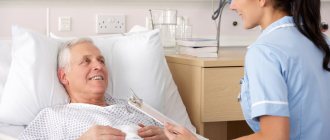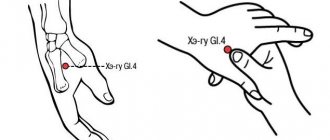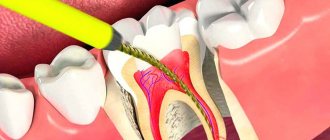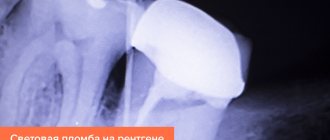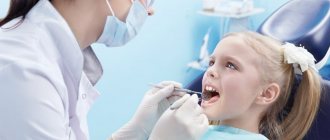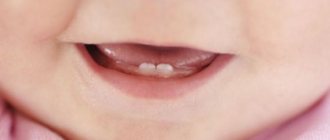Maksimovsky Yu.M., Lazebnik L.B., Lukyanov M.V., Plavunov N.F.
The manual reflects the main provisions relating to the clinic, diagnosis and provision of emergency care in case of emergency conditions in dental practice. Cases of emergency conditions that can threaten the patient’s life and which any dentist can encounter in his daily practice are considered. This manual is intended for dentists and senior students of dental faculties.
Reviewer: Rabinovich S.A., head. department anesthesiology, resuscitation, Federal University of Medical Sciences, MMSI, Associate Professor, Ph.D.
Producer: V.V. Sadovsky, deputy general Director of OJSC Dentistry.
What is a dental emergency?
Emergency dental care is understood as medical care provided for acute diseases, painful conditions, exacerbation of chronic diseases WITHOUT obvious signs of a threat to life, delaying the provision of which for an indefinite period of time will lead to a deterioration in the patient’s condition. Medical services can be provided in an outpatient setting.
Conditions requiring emergency dental care include:
- pulpitis (acute or exacerbation of chronic)
- periodontitis (acute and exacerbation of chronic)
- maxillofacial injuries (such as a dislocated or fractured tooth)
- exacerbation of odontogenic and non-odontogenic inflammatory diseases of the maxillofacial area
- stomatitis
- other acute painful conditions
- treatment requiring surgery
Emergency dental care can be provided both in a public dental clinic and in a private dental office.
Medical Internet conferences
As a result of studying patient records, the total number of which was 1,500, emergency conditions were identified in 95 people. Of these, there are 40 men and 55 women. The average age of the patients was 60.6 years.
In the presented cohort, collapse developed in 22 patients (23.6%); hypertensive crisis – in 37 cases (38.9%); stroke – in 1 case (1.05%); myocardial infarction – in 1 case (1.05%); bleeding – in 9 cases (9.47%); angina attack – in 12 cases (12.6%); allergic reactions – in 12 cases (12.6%); anaphylactic shock – in 1 case (1.05%).
To relieve emergency conditions, the following recommendations must be carefully followed.
The first thing we will start with is the actions during resuscitation measures: 1. Clear the oropharynx 2. Extend the head in the cervical spine 3. Move the jaw forward and upward 4. Open the mouth 5. Insert the air duct so that its end slides across the sky, and the convex side pushed back the tongue. Then the air duct is turned 180 degrees, going around the tongue, and inserted to the limiter. 2 breaths to the victim at a fast pace without pauses. 7. Start chest compressions - 30 compressions . 8. Indirect cardiac massage and mechanical ventilation in a ratio of 30:2. 9. For every 5 minutes of resuscitation, administer a solution of 0.1% - 1.0 adrenaline (sublingually or intravenously).
Epileptic seizure
1. Call the emergency services team. 2. Sanitation of the respiratory tract, removal of false jaws. 3. Providing the patient on his side to avoid tongue retraction. 4. After the seizures stop, measure pulse and blood pressure. 5. Phenozepam (elzepam) IV 10 mg, diluted in 10 ml of 0.9% sodium chloride solution, at a rate of no more than 3 ml/min. 6. Valproic acid (Konvulex) 5 – 10 mg/kg with slow intravenous administration.
Acute coronary syndrome
1. Lay the patient down with the head end elevated. 2. Measure blood pressure. 3.Call the emergency services team. 4.Under the tongue - nitroglycerin 0.4 mg every 5 minutes 3 times, under the control of heart rate and blood pressure. A decrease in blood pressure to less than 90/60 mmHg requires discontinuation of the drug. 5. If the pain persists for more than 10 minutes, chew a tablet of Acetylsalicylic acid in a dose of 250 -300 mg 6. Slowly IV - analgin solution 50% - 2 ml diluted 0.9% - 10 ml saline. R – ra 7. In the absence of contraindications – anaprilin 10 – 40 mg sublingually. Contraindications - bronchial asthma, bradycardia (heart rate - less than 60 beats per minute) SBP less than 90 mm Hg. 8. Hospitalization.
In hyperglycemic coma:
1. Call the emergency services team. 2. Rehydration is carried out when shock develops (blood pressure below 70 mm Hg) by intravenous administration of 0.9% sodium chloride solution at a dose of 20 ml/kg/hour 3. Hospitalization.
In hypoglycemic coma:
1. Call an emergency medical team 2. If there are warning signs of hypoglycemia and the ability to eat is preserved, it is advisable to give carbohydrate foods. 3. If coma develops, immediately administer 40-60 ml of 40% glucose solution.
Arterial hypertension
1. Lay the patient down with the head end elevated and calm the patient down. 2. Call the emergency services team. 3. Measure blood pressure pulse. Determine whether the patient was taking antihypertensive drugs. 4. If blood pressure increases - captopril (Capoten) 25 mg sublingually, if the effect is insufficient, again after 30 minutes at the same dose 5. If there is no effect from taking captopril - nifedipine (Corinfar) 10 -20 mg, if the effect is insufficient, again after 30 minutes at the same dose. 6. For a combination of elevated SBP and tachycardia - propanolol (anaprilin) 10-40 mg sublingually. Contraindications to the drug are bronchial asthma and bradycardia.
Fainting
1. Give the patient a horizontal position, raise his legs, lightly massage the whole body. 2. Ensure free breathing and fresh air flow. 3. Reflexively stimulate the respiratory and vasomotor centers - 10% aqueous ammonia solution, spraying the face with cold water. 4. In case of prolonged fainting, call the emergency medical team. 5. In case of prolonged fainting, administer 1 ml of 20% solution of caffeine sodium benzoate intramuscularly. 6. If there is no effect, iv slowly 0.1 – 0.3 – 0.5 ml of 1% mezatone solution in 20 ml of 0.9% sodium chloride solution.
Collapse
1. Call the emergency services team. 2. Place the patient in a horizontal position with the leg end raised, provide access to fresh air, and warm the patient. 3. Ensure airway patency. 4. Constant monitoring of blood pressure and heart rate. Venipuncture.5. IV prednisolone 60-90 mg bolus. 6. IV drip solution of sodium chloride 0.9% - 400 ml. 7. Mezaton 1% 1ml drip. 8. Hospitalization.
Anaphylactic shock
1. Call the emergency resuscitation team. 2. Place the patient in a horizontal position with the leg end raised. Cover warmly. 3. Ensure airway patency. 4.V/m, subcutaneously, into the muscles of the floor of the mouth, under the tongue, inject 0.3 -0.5 ml of 0.1% adrenaline diluted with 5.0 ml of saline. r – ra (every 20 minutes for an hour, the second dose can be administered after 5 minutes.) 5. Venipuncture. Prednisolone 90 – 150 mg (up to 300 mg) is injected intravenously. 6. IV administration of saline and colloidal solution 0.9% sodium chloride – 400 – 800 ml. 7. For bronchospasm - intravenous euphilin 2.4% r - r 5 -10 ml. 8. Before the arrival of the resuscitation team, constant monitoring of blood pressure, pulse, and respiration.
What is emergency dental care?
Emergency dental care refers to medical care provided for sudden acute diseases, conditions, exacerbation of chronic diseases that pose a threat to the patient’s life. Such assistance can ONLY be provided within a hospital setting. If, based on the results of the examination, the dentist made an objective decision that it is impossible to provide assistance on an outpatient basis, he has the right to refuse the patient and send him by ambulance to the hospital.
Conditions requiring emergency dental care include:
- cellulitis (an acute bacterial infection of the skin and subcutaneous tissues, most often caused by streptococci or staphylococci)
- abscess
- furuncle
- carbuncle
- osteomyelitis.
- tooth extraction requiring external access
- other conditions for which assistance can only be provided in a hospital setting
Main literature
Bichun A.B., Emergency care in dentistry
/ Bichun A.B., Vasiliev A.V., Mikhailov V.V. - M.: GEOTAR-Media, 2016. - 320 p. (Series “Library of a Medical Specialist”) - ISBN 978-5-9704-3471-0 - Text: electronic // EBS “Student Consultant”: [website]. — URL: https://www.studentlibrary.ru/book/ISBN9785970434710.html (access date: 06/10/2020). — Access mode: by subscription.
Dolina O.A., Anesthesiology and Reanimatology
[Electronic resource]: textbook / Ed. O.A. Valley - 4th ed., revised. and additional - M.: GEOTAR-Media, 2009. - 576 p. — ISBN 978-5-9704-1033-2 — Access mode: https://www.rosmedlib.ru/book/ISBN9785970410332.html
More thorough examination of patients' health status
Dr. Peskin notes that getting a complete picture of a patient's health is critical. He suggests expanding the standard questionnaire and spending 5-10 minutes more interviewing the patient.
In addition to its positive impact on the patient relationship, this approach can provide you with truly valuable information. As an example, Dr. Peskin cites the issue of smoking. If the patient answered that he does not smoke, you should ask him how long ago he quit this bad habit. It is quite possible that in response you will hear something like “A couple of weeks,” and this is a significant factor both in dental treatment and in the event of a critical condition.
The wording of the questions is also important. For example, you might ask a patient if he/she snores and get a negative answer. As an alternative wording for this question, Robert suggests the following: “Do your loved ones complain about your snoring?”
INTRODUCTION
The provision of specialized dental care has a number of features characteristic of this specialty. Thus, dental care is one of the most popular among the population. A visit to the dentist is always a rather strong psychological and painful stress factor for all patients without exception, which often provokes general complications. And if we take into account that at least 1/3 of dental patients have a history of compensated general somatic diseases, then we can understand that the dentist will sooner or later face such problems when, in addition to professional dental procedures, he will have to resort to measures to provide emergency and urgent care.
The tactics of providing urgent and sometimes emergency care to patients with somatic diseases remains a big challenge for dentists. In the available dental literature, information on this issue is insufficient, which requires detailed coverage.
The development and improvement of dental services make it necessary to constantly cover issues that pose certain difficulties for dentists. Strange as it may seem, the problems of interaction between a dentist and doctors of other specialties still remain largely open.
This publication is intended to familiarize dentists with general medical tactics when providing dental care to patients with the most common therapeutic diseases and life-threatening conditions. It outlines the basic principles of providing prehospital care in a clinic setting, focusing on medications that should be in every dental office.
The dentist is not always warned in advance that the patient belongs to a risk group, since many patients with chronic general somatic pathology do not turn to medical specialists (therapist, neurologist, cardiologist, etc.), while the presence of a dental disease may aggravate its course, which will require appropriate emergency care. And since you often have to wait quite a long time for an ambulance, the dentist must be oriented in diagnosis, especially those that arise during an outpatient appointment.
The dentist must remember that the need to provide dental care, especially in emergency situations, can unexpectedly lead to the emergence of a new disease, exacerbation or complication of long-existing somatic diseases, as well as the development of an acute and life-threatening disease state. Medical emergencies can and do occur in dental offices. The data cited by S. Malomed (1998, USA) clearly demonstrate that the atmosphere of dental offices does not guarantee against the development of potentially life-threatening situations. Syncope accounts for about 50% of all medical emergencies. Mild allergic reaction and angina account for 8.5% and 8%, respectively. A small percentage of cases are allocated to other emergency conditions, but it should be remembered that behind each such case there is a human life. For example, insulin shock accounted for 3% of cases, cardiac arrest occurred in 1.1% of patients, an anaphylactic reaction was also observed in 1%, myocardial infarction occurred in 0.9%, acute pulmonary edema occurred in 0.5%, and stroke occurred in 0.9%. 0.2% of patients receiving dental care. The causes of a stressful situation are different: natural or unusual reactions to dental interventions, experienced or expected pain, fear, sleepless night, reaction of expectation, etc. At work, at home, on the way to the doctor, in the chair, after treatment, an attack of angina pectoris may develop, myocardial infarction, hypertensive crisis, fainting, etc. The incidence of systemic complications over time is distributed as follows: before treatment -1.5% of cases are observed, during or after local anesthesia 54.9%, during treatment - 22%, after treatment 15.5% and after leaving the office 5.5% of cases. If emergency conditions develop during treatment, then 38.9% of them occur during tooth extraction, and 26.9% during pulp extirpation. Often delayed, later reactions occur: arthritis, carditis, nephritis, sepsis, etc. The dentist is not always able or willing to pay due attention to the patient’s somatic history, which is sometimes fraught with medical error, for example, the use of adrenaline for hypertension , lidocaine - for impaired atrioventricular conduction, penicillin - for allergies, etc.
The dentist must not only navigate the peculiarities of the course of the most common general somatic diseases,™ and be able to carry out the necessary prevention of complications, taking adequate emergency or urgent measures to remove the patient from a serious condition.
Distribution of duties
Reaction speed is the key to successful management of a patient’s critical condition. In order for such a reaction to be as fast as possible, it is necessary to distribute responsibilities. Every employee of a dental clinic/office should know what to do when a patient requires emergency care.
It is better to make the relevant instructions in advance and bring them to the attention of all employees. Those who have a medical education can directly provide first aid, while administrators can call an ambulance, contact the patient’s attending physician, and, if necessary, relatives.
Such an action plan should be redundant, that is, you cannot entrust any task to just one person, because he may be absent from the workplace at a critical moment.
The main thing is to make sure that no one interferes with anyone and everyone does what is required, making their contribution to correcting the situation. In addition, according to Dr. Peskin, it would be a good idea to train all clinic employees in the basics of first aid.
It is also necessary to appoint someone responsible for regular (weekly) checking of the first aid kit mentioned above. It is extremely unpleasant to discover a non-functioning oxygen cylinder at a time when the patient really needs it. You can also set up notifications in your electronic calendar that will help you replace medications as they expire.
